Abstract
Six tests commonly used for the presumptive identification of group D streptococci were evaluated. Strains tested included 282 group D streptococci and 366 non-group D. Ratios of percentages of group D to non-group D strains which gave positive reactions for each test are as follows: bile-esculin, 100:2; salt tolerance, 88:24; heat tolerance, 100:80; SF broth, 86:1; KF broth, 99:40; and methylene blue milk reduction, 90:17. These data indicate that the bile-esculin test provided a reliable means of identifying group D streptococci and differentiating them from non-group D streptococci. Methodology for reading and interpreting positive reactions and time of incubation of the bile-esculin medium was defined. Evidence of the need for standardization of salt and heat-tolerance tests was obtained.
Full text
PDF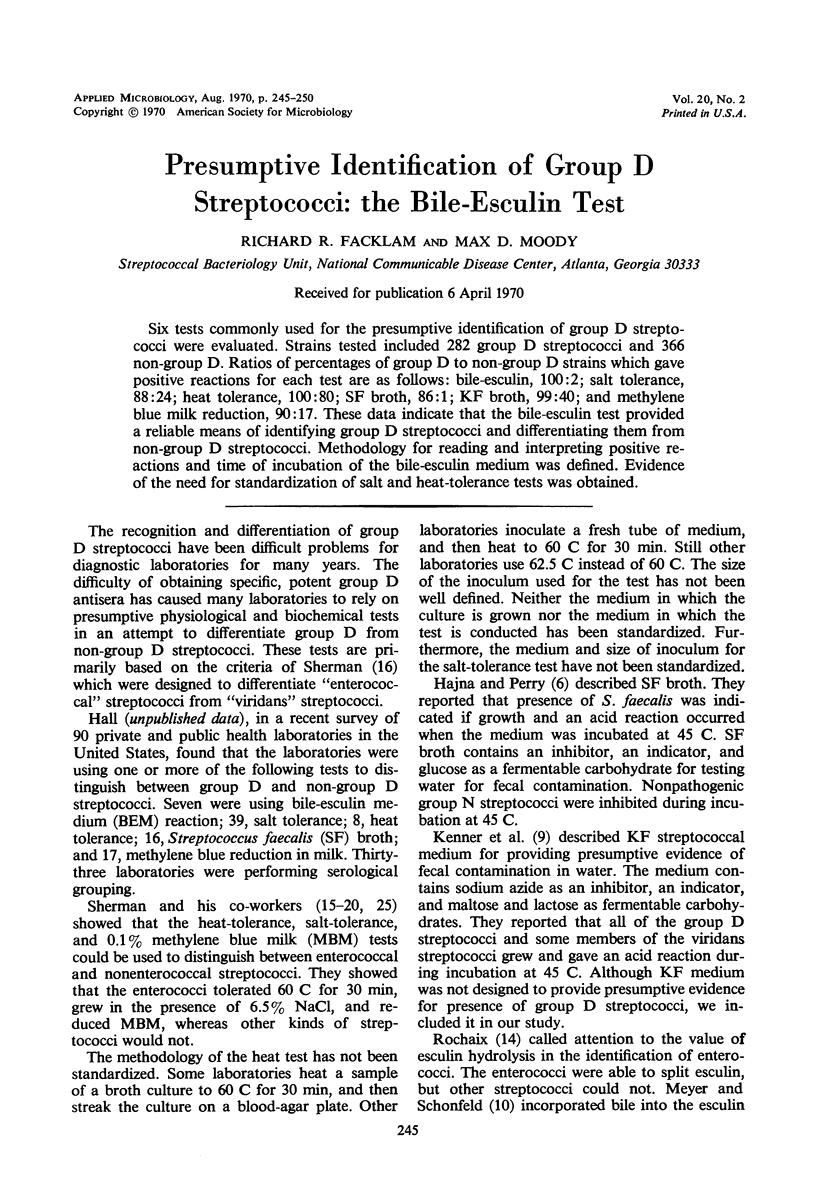
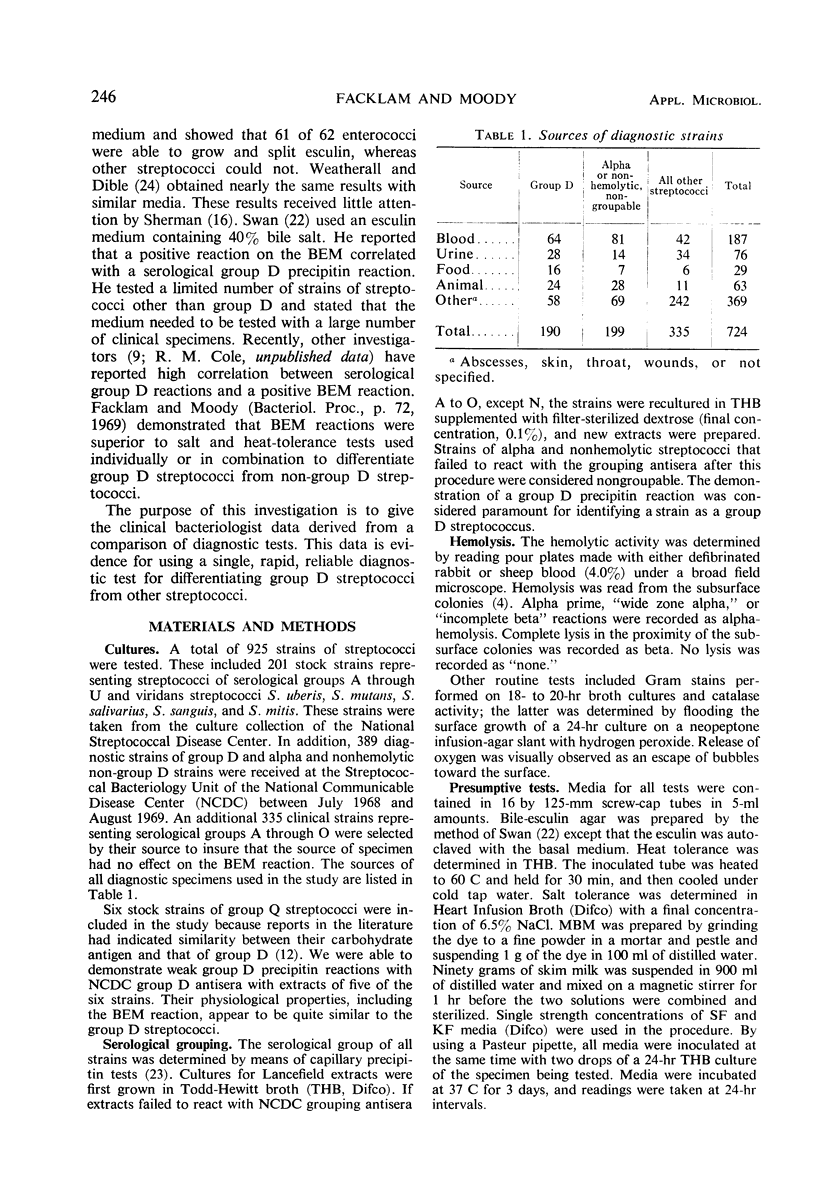
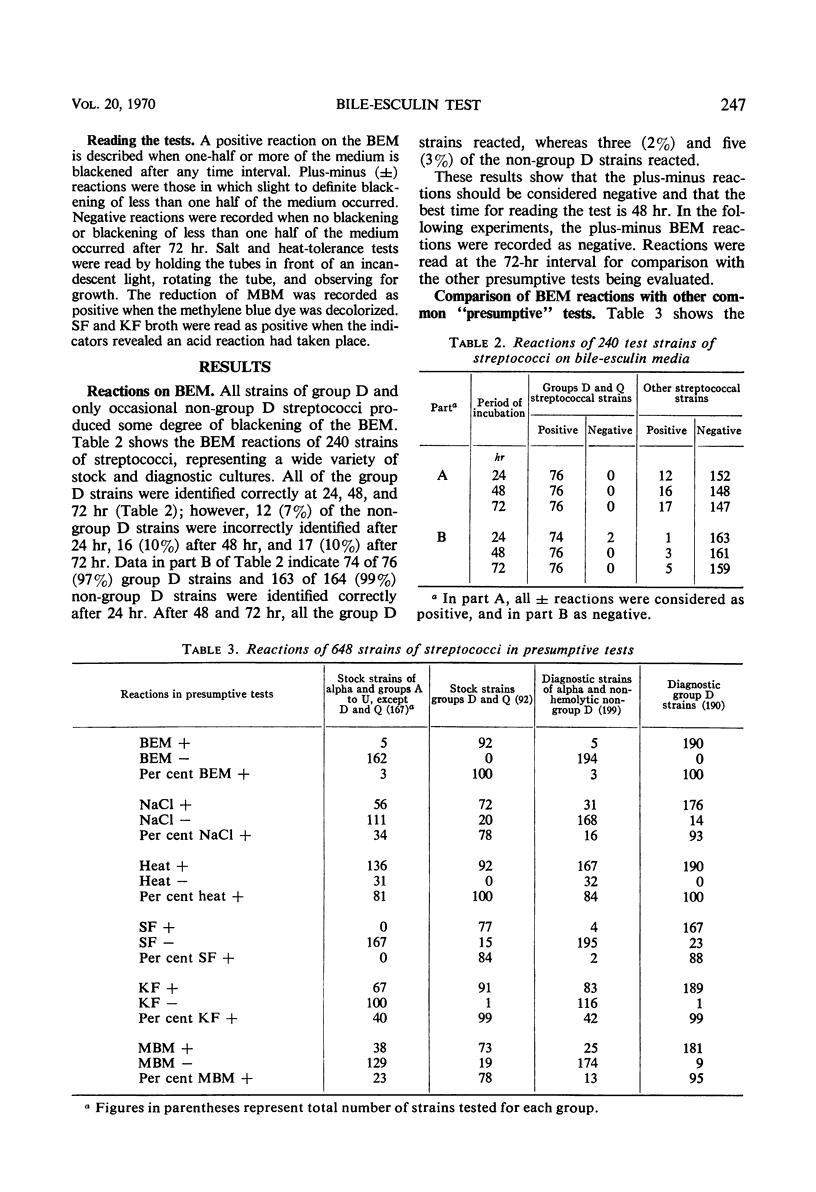
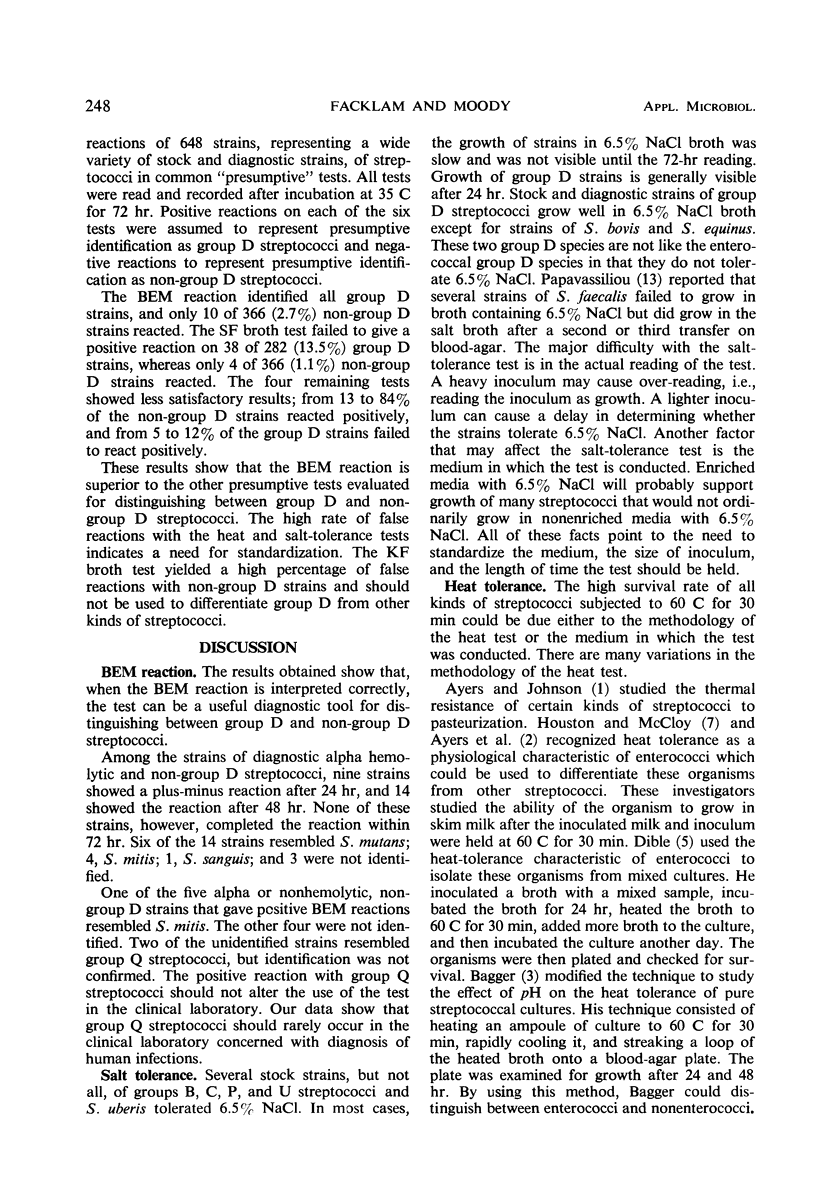
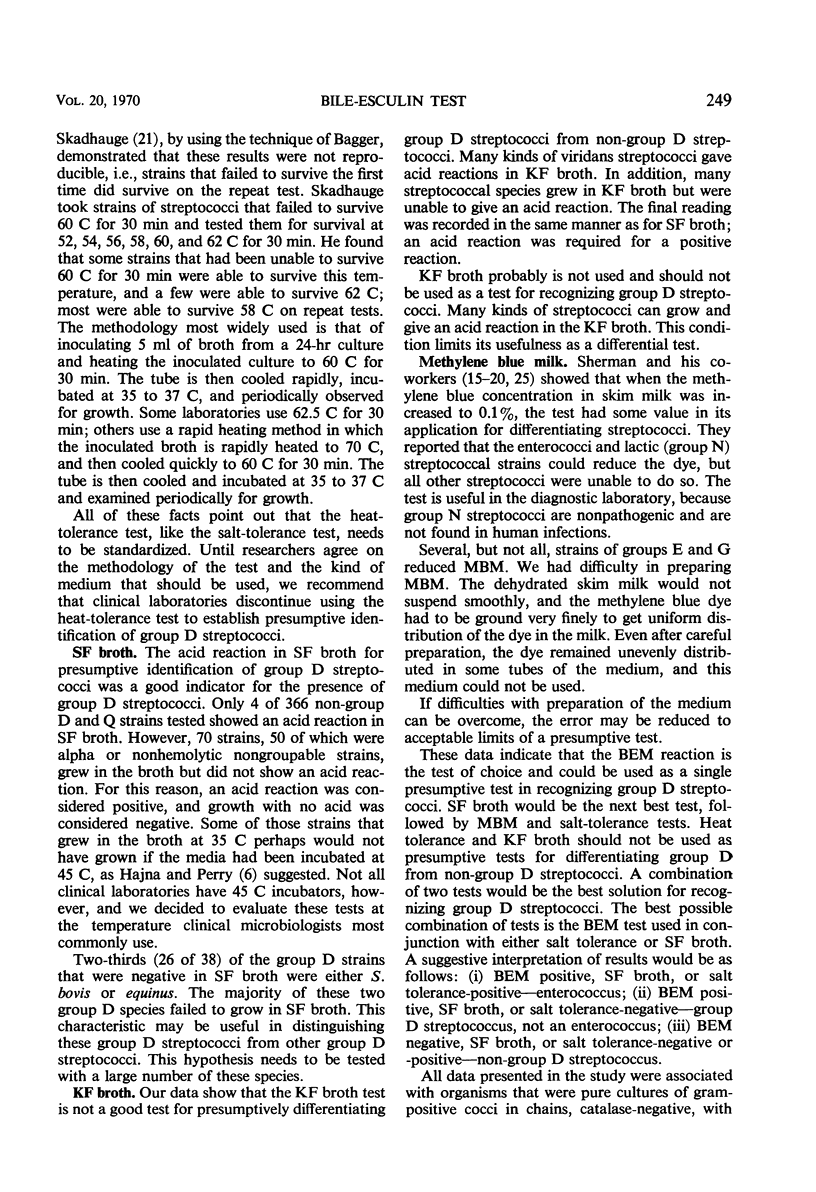
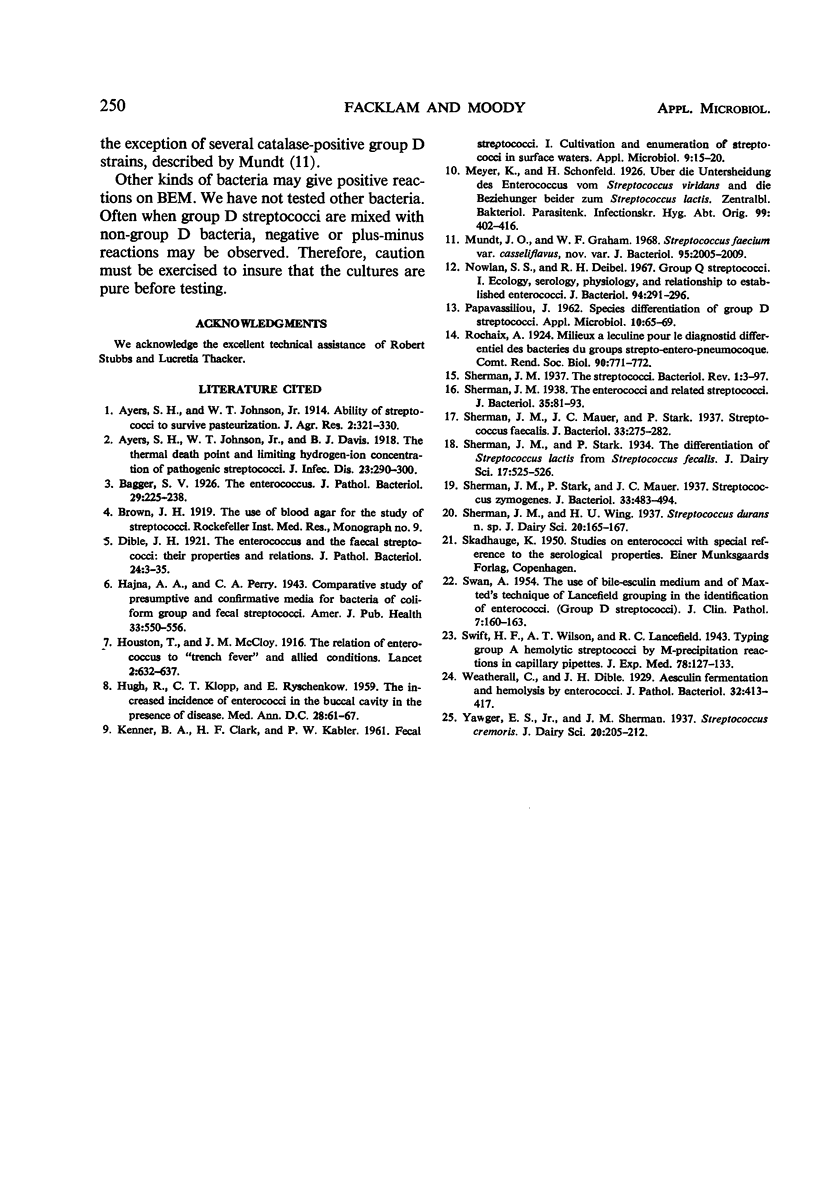
Selected References
These references are in PubMed. This may not be the complete list of references from this article.
- HUGH R., KLOPP C. T., RYSCHENKOW E. The increased incidence of enterococci in the buccal cavity in the presence of disease. Med Ann Dist Columbia. 1959 Feb;28(2):61–67. [PubMed] [Google Scholar]
- Hajna A. A., Perry C. A. Comparative Study of Presumptive and Confirmative Media for Bacteria of the Coliform Group and for Fecal Streptococci. Am J Public Health Nations Health. 1943 May;33(5):550–556. doi: 10.2105/ajph.33.5.550. [DOI] [PMC free article] [PubMed] [Google Scholar]
- KENNER B. A., CLARK H. F., KABLER P. W. Fecal Streptococci. I. Cultivation and enumeration of Streptococci in surface waters. Appl Microbiol. 1961 Jan;9:15–20. doi: 10.1128/am.9.1.15-20.1961. [DOI] [PMC free article] [PubMed] [Google Scholar]
- Mundt J. O., Graham W. F. Streptococcus faecium var. casselifavus, nov. var. J Bacteriol. 1968 Jun;95(6):2005–2009. doi: 10.1128/jb.95.6.2005-2009.1968. [DOI] [PMC free article] [PubMed] [Google Scholar]
- Nowlan S. S., Deibel R. H. Group Q streptococci. I. Ecology, serology, physiology, and relationship to established enterococci. J Bacteriol. 1967 Aug;94(2):291–296. doi: 10.1128/jb.94.2.291-296.1967. [DOI] [PMC free article] [PubMed] [Google Scholar]
- PAPAVASSILIOU J. Species differentiation of group D streptococci. Appl Microbiol. 1962 Jan;10:65–69. doi: 10.1128/am.10.1.65-69.1962. [DOI] [PMC free article] [PubMed] [Google Scholar]
- SWAN A. The use of a bile-aesculin medium and of Maxted's technique of Lancefield grouping in the identification of enterococci (group D streptococci). J Clin Pathol. 1954 May;7(2):160–163. doi: 10.1136/jcp.7.2.160. [DOI] [PMC free article] [PubMed] [Google Scholar]
- Sherman J. M., Mauer J. C., Stark P. Streptococcus fecalis. J Bacteriol. 1937 Mar;33(3):275–282. doi: 10.1128/jb.33.3.275-282.1937. [DOI] [PMC free article] [PubMed] [Google Scholar]
- Sherman J. M., Stark P., Mauer J. C. Streptococcus zymogenes. J Bacteriol. 1937 May;33(5):483–494. doi: 10.1128/jb.33.5.483-494.1937. [DOI] [PMC free article] [PubMed] [Google Scholar]
- Sherman J. M. THE STREPTOCOCCI. Bacteriol Rev. 1937 Dec;1(1):3–97. doi: 10.1128/br.1.1.3-97.1937. [DOI] [PMC free article] [PubMed] [Google Scholar]
- Sherman J. M. The Enterococci and Related Streptococci. J Bacteriol. 1938 Feb;35(2):81–93. doi: 10.1128/jb.35.2.81-93.1938. [DOI] [PMC free article] [PubMed] [Google Scholar]


